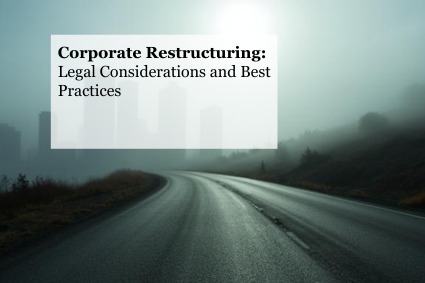Rights of Women in a Live-in Relationship

Introduction:
The concept of Live-in Relationships has been gaining popularity in the 21st Century after multiple decades of being considered a taboo in the India society. Until recently, and even so in the present, a lot of people are of the view that the concept of Live-in Relationships is not conforming to the morals and values of the Indian culture and has been a hotly debated issue with more and more people emerging in its support in today’s world. However, some people often come up with their reservations as to the abuse and exploitation of women in a live-in relationship. Hence, in this article, we delve into the concept of Live-in Relationship and analyze its legal position in the eyes of the law and the associated rights of a woman in a live-in relationship.
What Is A Live-In Relationship?
Although there is no legal definition for the term coded in any of our statutes, a live-in relationship can be defined in laymen terms as a living arrangement in which an unmarried couple lives together in a setting that resembles a marriage. It is an arrangement whereby two people decide to live together on a long-term or permanent basis in an emotionally and/or sexually intimate relationship however, without being confined by the commitments of a formal marriage.
Legal Recognition Of A Live-In Relationship:
In spite of the colloquial immorality associated with live-in relationships , the Privy Council in a case as old as 1927 not only considered the aspect of a live-in relationship but also provided a certain degree of legal ratification to the same while also assuring that it does not result in concubinage thereby protecting women morally, socially as well as legally. The Privy Council in its judgment of A. Dinohamy vs W.L. Balahamy1 held that where a man and a woman are proved to have lived together as husband and wife, the law will presume, unless the contrary is clearly provided, that they were living together in consequence of a valid marriage and not in a state of concubinage. This was the first time, that the courts in India identified and acknowledged the existence of live-in relationships.
Subsequently, in the year 1952, the Hon’ble Supreme Court of India in the case of Gokul Chand vs Parvin Kumari2 observed that continuous co-habitation of a man and a woman as husband and wife and their treatment as such for a number of years may raise the presumption of marriage. A similar ruling of presumption in favour of a wedlock was given by the Hon’ble Supreme Court again in the case of Chanmuniya vs Chanmuniya Virendra Kumar Singh Kushwaha and Anr.3
Rights Of A Woman In A Live-In Relationship:
As can be seen above precedents, the courts, after due recognition and acknowledgement of existence of live-in relationships in the Indian society, have always endeavored to save the women from falling a prey to the disastrous concept of concubinage. The following legal precedents laid down the following rights of a woman in a live-in relationship:
- Right of Inheritance of Property after the death of her partner:
The Hon’ble Apex Court of India in deciding that couples living in a live-in relationship would be presumed to legally married, held that the woman in the said love-in relationship would be eligible to inherit the property after the death of her partner. This decision was given in the case of Dhannulal & Ors. vs. Ganeshram & Ors.4 wherein the court also upheld the legitimacy of children born out of the live-in relationships and their right to claim inheritance from the property of the parents. The court made it expressly clear that law presumes in favour of marriage and against concubinage, when man and woman have cohabited continuously for long time. - Right of Maintenance u/s 125 of CrPC:
The Committee on Reforms of Criminal Justice System, headed by Dr. Justice V. S. Malimath, in its Report of March, 20035 strongly recommended that the definition of the word ‘wife’ in Section 125 should be amended so as to include a woman who was living with the man as his wife for a reasonably long period. Though there has been no formal amendment made, the definition of wife can now be said to include a woman living in a live-in relationship with a man for a reasonably long period of time as and by way of judicial interpretations.The Hon’ble Apex Court of India in its decision of Chanmuniya (Supra) recognized the factum of live-in relationships and held that a woman who is a party to a live-in relationship would have the status of a wife and should be in fact awarded maintenance. The court also went ahead and clarified that the male partner cannot derive any benefit from denying maintenance on the ground that there was no valid marriage. The Punjab & Haryana High Court re-iterated and emphasized the aforesaid ruling while relying on the SC judgment of Chanmuniya. - Right to Protection & Shared-Household under Protection of Women from Domestic Violence Act, 2005:
The Hon’ble Supreme Court of India examined this legal angle in the case of Lalita Toppo vs. State of Jharkhand & Anr.6 That the Protection of Women from Domestic Violence Act of 2005 (“Domestic Violence Act”) provides an “efficacious remedy” for maintenance even if the victim is not a legally wedded wife and in fact, under the provisions of Domestic Violence Act, 2005 the victim i.e. the estranged wife or live-in partner would be entitled to more relief than what is contemplated under Section 125 of the Code of Criminal Procedure, 1973, namely to a shared household also.Even in the case of Indra Sarma vs. V.K.V. Sarma7, the Hon’ble Supreme Court delved into the discussion of whether or not a “Live-in Relationship” would amount to a “Relationship in the Nature of Marriage” falling within the definition of “Domestic Relationship” under Section 2 (f) of Domestic Violence Act and whether the failure to maintain a woman involved in such a relationship amounts to “Domestic Violence” within Section 3 of the Domestic Violence Act.It is however, important to bear in mind that women in all live-in relationships are not entitled to the benefits as mentioned above but only women in those live-in relationships that qualify as relationship in the nature of marriage will be entitled to the same. Another point arising out of this is that only stable and reasonably long period of relationship between the couple is generally given protection under the ambit of Domestic Violence Act, 2005. - Right to Claim Legitimacy of Children:
It is a well, settled law in our country that the children born out of a live-in relationship, irrespective of subsistence of previous marriage of either of the partners or any other factor, will have the status of legitimate children. The Hon’ble Supreme Court in the case of S.P.S. Balasubramanyam vs. Suruttayan8 for the first time ruled upon and upheld the legitimacy of children born out of a live-in relationship.Further, in the caser of Tulsa vs Durghatiya9 the Hon’ble Supreme Court ruled that the children born out of live-in relationship will not be illegitimate with an important precondition that that the parent must have lived under one roof and cohabited for a significantly long time for the society to recognize them as husband and wife. Not only this, moving a step ahead, in the case of Revanasiddappa vs Mallikarjun10 the Apex Court that the birth of a child out of such a relationship (live-in relationship) has to be viewed independent of the relationship of the parents. It is as plain and clear as sunshine that a child born out of such a relationship is innocent and is entitled to all the rights and privileges available to the children born out of valid marriages. - Right to Invoke Section 498A of the Indian Penal Code:
Section 498A of the Indian Penal Code, 1860 provides an effective remedy for a woman against dowry harassment. With the increasing trend of judicial precedents taking pro women stand for women involved in a live-in relationship, surprisingly in the case of Shivcharan Lal Verma & Ors. vs. State of Madhya Pradesh11 the Apex Court held that there must be a valid marital relationship between he accused and the victim otherwise the penal provisions of Section 498A will not be attracted.Later on in 2009, the Hon’ble Supreme Court in the case of Koppisetti Subbharao vs State of A.P.12 went on to protect a woman in a live-in relationship from harassment for dowry. The Court while denying the contention of the man that Section 498A does not apply to him since he was not married to his live-in partner held that the nomenclature ‘dowry’ does not have any magical charm written over it. It is just a label given to a demand of money in relation to a marital relationship. The court also expressed that “there could be no impediment in law to liberally construe the words or expressions relating to the persons committing the offence so as to rope in not only those validly married, but also anyone who has undergone some or other form of marriage, and thereby assume for himself the position of husband to live, co-habitat and exercise authority as such husband over another woman”.However, there are contradicting judgments by various high courts including one by Kerala High Court in the case of Unnikrishnan vs. State of Kerala13 wherein the judgment of Koppisetti (Supra) was also cited. However, the Kerala High Court in this case after considering various decisions of the Supreme Court has held that for an offence under Section 498-A to be committed, the parties must have undergone some sort of ceremonies with the object of getting married. In that case, the parties did not perform any ceremony and just started living together and hence it was held that a woman in a live-in relationship was not entitled to file a complaint under the section.
Conclusion
As of today, from most of the judicial precedents, it can be easily said that the judicial stand with regards to the rights of women in live-in relationship is very clear and the same in pro women. This approach of the judiciary helps the women in a live-in relationship by empowering them with conferment of various rights available to a legally wedded wife and protecting them under law from any kind of abuse. This can be seen as a welcome change in law with the changing times and trends in modern society thereby fulfilling the role to judiciary to answer the call of society for adapting to the changes in thinking of the society at large and modifying the legal landscape in the country to go hand in hand with changing times.
- AIR 1927 PC 185
- AIR 1952 SC 231
- (2011) 1 SCC 141
- (2015) 12 SCC 301
- Available at https://www.mha.gov.in/sites/default/files/criminal_justice_system_2.pdf
- (2019) 13 SCC 796
- (2013) 15 SCC 755
- (1994) 1 SCC 460
- (2008) 4 SCC 520
- (2011) 11 SCC 1
- (2007) 15 SCC 369
- (2009) 12 SCC 331
- 2017 SCC OnLine Ker 12064; (2017) 3 KLJ 918; 2018 Cri LJ 265
By entering the email address you agree to our Privacy Policy.



